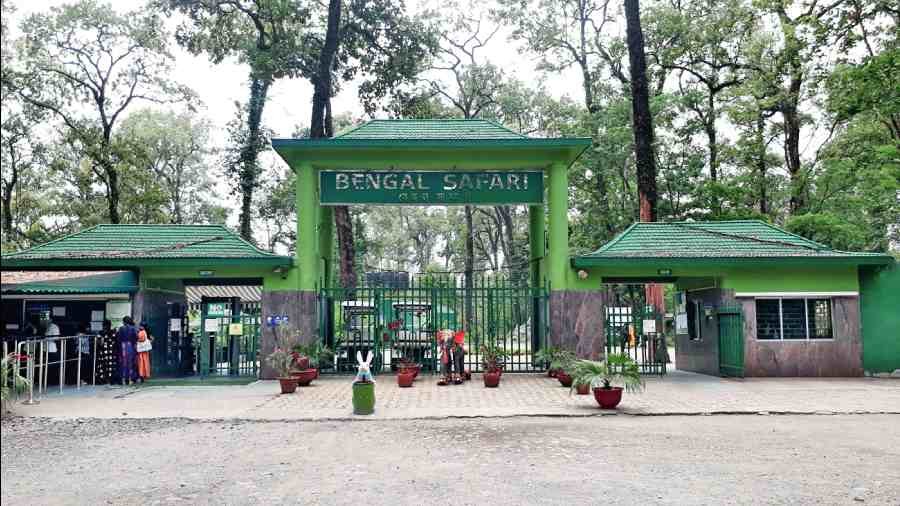Unveiling the Enigmatic Beauty of Sikkim: A Himalayan Wonderland | 7 Points to Visit
Nestled in the heart of the eastern Himalayas, Sikkim emerges as a pristine gem, captivating travelers with its unparalleled beauty and tranquility. This enchanting Himalayan state, bordered by Bhutan, Tibet, and Nepal, beckons adventurers and nature lovers alike to explore its breathtaking landscapes, rich cultural heritage, and warm hospitality. Let’s embark on a journey to uncover the mesmerizing beauty of Sikkim, where every vista tells a tale of wonder and serenity.
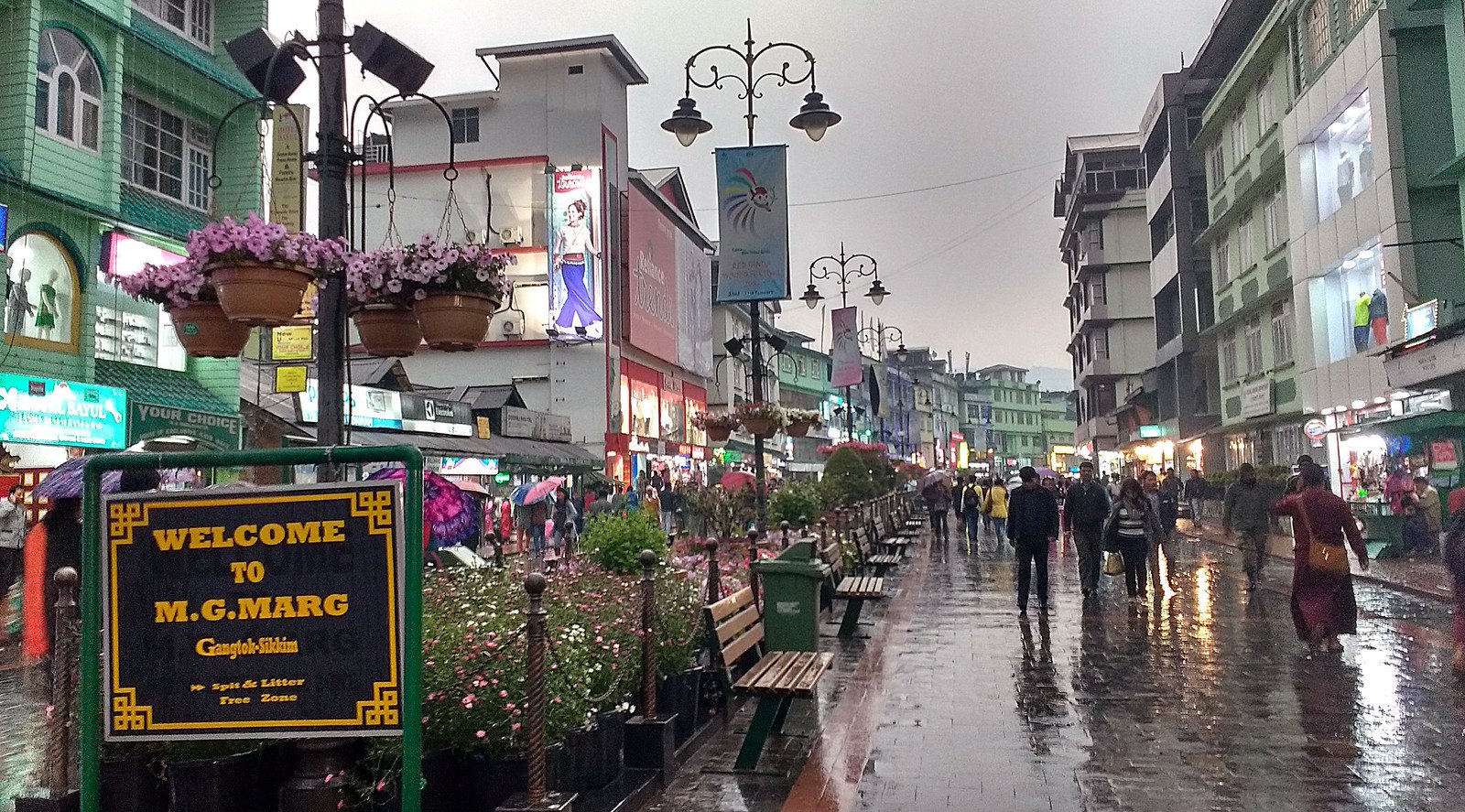
The Beauty Of Sikkim - Majesty of Kanchenjunga
Sikkim’s crowning glory is the awe-inspiring presence of Mount Kanchenjunga, the third highest peak in the world. Its snow-capped summit pierces the sky, casting a majestic shadow over the entire state. As the first rays of dawn kiss the peaks, Kanchenjunga transforms into a golden spectacle, mesmerizing all who behold its grandeur. The mountain holds deep spiritual significance for the people of Sikkim, symbolizing strength, resilience, and the eternal beauty of Sikkim and the Himalayas.
Table of Contents
The Majesty of Kanchenjunga
The Beauty of Sikkim is characterized by North Sikkim and its rugged terrain, dense forests, alpine meadows, and snow-capped mountains. It is bordered by Tibet to the north, Bhutan to the east, and the Indian state of West Bengal to the south. The region is dominated by the Himalayas, with several peaks rising above 7,000 meters, including the majestic Kanchenjunga, the third highest mountain in the world.
Tourist Attractions:
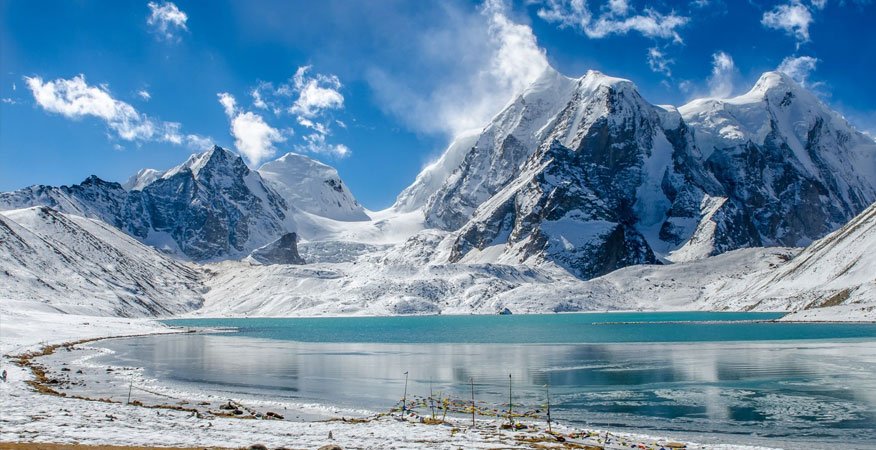
Gurudongmar Lake the Beauty of Sikkim
One of the highest lakes in the world, Gurudongmar Lake is a sacred site for both Buddhists and Hindus. Surrounded by snow-capped peaks, it offers breathtaking views and is considered a must-visit destination and enhance the Beauty of Sikkim.
Gurudongmar Lake sits at an altitude of around 17,800 feet (5,430 meters) above sea level, making it one of the highest lakes in the world. It is nestled amidst the Himalayan mountain ranges, close to the Indo-China border. The lake is situated in a remote and rugged terrain, accessible only via a challenging journey through mountainous roads.
The lake holds immense religious significance for both Buddhists and Hindus. According to legend, Guru Padmasambhava (also known as Guru Rinpoche), the founder of Tibetan Buddhism, visited the lake during his journey to Tibet. It is believed that he blessed the lake, and hence, it is named after him. The lake is also considered sacred by Hindus, who believe that its waters possess miraculous healing properties.
Despite its harsh and inhospitable environment, Gurudongmar Lake is home to a variety of flora and fauna adapted to high-altitude conditions. Visitors may spot migratory birds, including Brahminy ducks and redstarts, along with other wildlife such as blue sheep, Tibetan gazelles, and snow leopards in the surrounding wilderness add additional Beauty of Sikkim for the visitors. Conservation efforts are underway to protect the fragile ecosystem of the lake and its surrounding areas.
Yumthang Valley
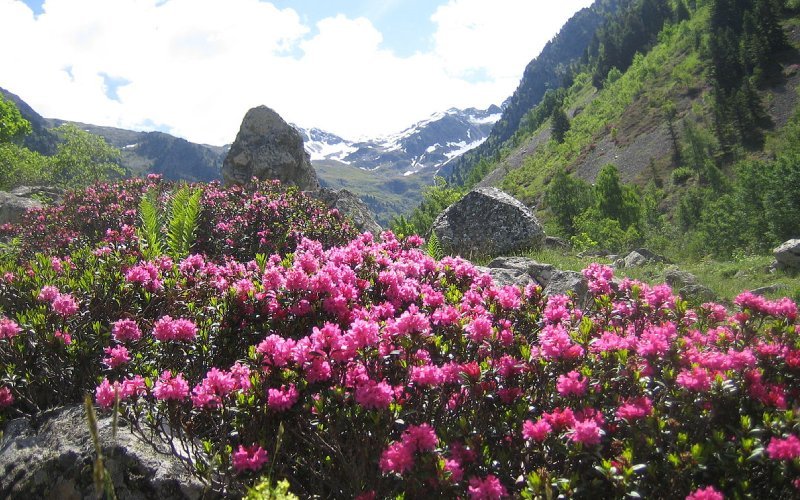
Yumthang Valley, often hailed as the “Beauty of Sikkim,” epitomizes the enchanting allure of this northeastern Indian state.
Yumthang Valley is renowned for its rich biodiversity, particularly its profusion of alpine flowers that bloom in abundance during the spring and summer months will boost the Beauty of Sikkim(April to June). The valley is carpeted with a riot of colors, as various species of rhododendrons, primulas, poppies, and other wildflowers burst into bloom, creating a mesmerizing tapestry of hues. The valley is also home to several species of Himalayan birds, including the blood pheasant, Himalayan monal, and snow partridge.
One of the Beauty of Sikkim is the presence of natural hot springs, known as Yumthang Hot Springs or Yumesamdong Hot Springs. These geothermal springs are revered for their therapeutic properties and are believed to have medicinal benefits. Visitors can soak in the warm, mineral-rich waters while enjoying panoramic views of the surrounding mountains and valleys.
Access to Yumthang Valley is primarily via road from the town of Lachung, which is the nearest settlement. The journey to the valley involves navigating through winding mountain roads, offering breathtaking views of the surrounding landscape. Due to its high altitude and remote location, visitors are advised to acclimatize properly and take precautions against altitude sickness.
Lachung and Lachen
Lachung” and “Lachen,” the twin gems of North Sikkim, epitomize the “Beauty of Sikkim” with their enchanting landscapes, serene ambiance, and cultural richness. Here’s an elaborate exploration of how these two picturesque towns embody the essence of Sikkimese beauty.
Katao
Katao is situated at an altitude of approximately 13,500 feet (4,115 meters) above sea level, amidst the rugged terrain of the Himalayan mountains. It is located in close proximity to the town of Lachen, which serves as a base for exploring this scenic area. Access to Katao is restricted, and tourists require special permits from the local authorities to visit the region. From picturesque landscapes to vibrant culture, these twin towns offer a glimpse into the enchanting allure of the “Beauty of Sikkim.”
Katao is renowned for its stunning natural beauty, characterized by snow-capped peaks, alpine meadows, and dense forests. The landscape is dotted with rhododendron trees, which burst into vibrant blooms during the spring season, adding a splash of color to the surroundings. The region offers panoramic views of the Himalayan ranges, including the majestic peaks of Kanchenjunga and Siniolchu play the major role to add Beauty of Sikkim.
Phodong Monastery
Phodong Monastery, also spelled as Phodang, has a rich history dating back to the early 18th century. It was established in 1740 by the Chogyal Gyurmed Namgyal, the third Chogyal (king) of Sikkim, under the Nyingma sect of Tibetan Buddhism. The monastery was built to propagate Buddhist teachings and to serve as a center for spiritual learning and religious practices.
The monastery is renowned for its traditional Tibetan architecture, characterized by intricately carved wooden facades, colorful murals, and ornate prayer halls. The main temple, known as the Tsuklakhang, is adorned with beautiful thangka paintings, Buddhist scriptures, and sacred artifacts. The monastery complex also includes residential quarters for monks, meditation halls, and other ancillary buildings.
Phodong Monastery is an important religious institution for followers of Tibetan Buddhism, particularly the Nyingma tradition. It serves as a center for Buddhist rituals, ceremonies, and religious festivals throughout the year. Monks residing in the monastery engage in daily prayers, meditation, and religious studies, following the teachings of Guru Padmasambhava (Guru Rinpoche) and other revered Buddhist masters.
Verdant Valleys and Pristine Lakes
Beyond the towering peaks, Beauty of Sikkim reveals a tapestry of verdant valleys, dotted with emerald-green forests, terraced fields, and meandering rivers. The Yumthang Valley, adorned with vibrant rhododendrons, is a paradise for nature enthusiasts, while the serene Gurudongmar Lake, nestled amidst snow-capped mountains, reflects the azure sky like a shimmering jewel. Each valley and lake holds its own charm, inviting visitors to immerse themselves in the tranquil beauty of the Himalayan landscape.
Cultural Riches and Spiritual Sanctuaries
Sikkim’s cultural heritage is as diverse and vibrant as its natural landscapes, shaped by centuries of history, tradition, and religious influence. The state is home to a mosaic of communities, including the indigenous Lepchas, Bhutias, and Nepalese, each contributing to its unique cultural tapestry. Monasteries and stupas, such as Rumtek Monastery and Pemayangtse Monastery, stand as architectural marvels, offering spiritual solace amidst the Himalayan peaks. Festivals like Losar, Saga Dawa, and Dashain showcase the rich cultural heritage of Sikkim, with colorful rituals, traditional dances, and joyful celebrations.
Adventures in the Wilderness
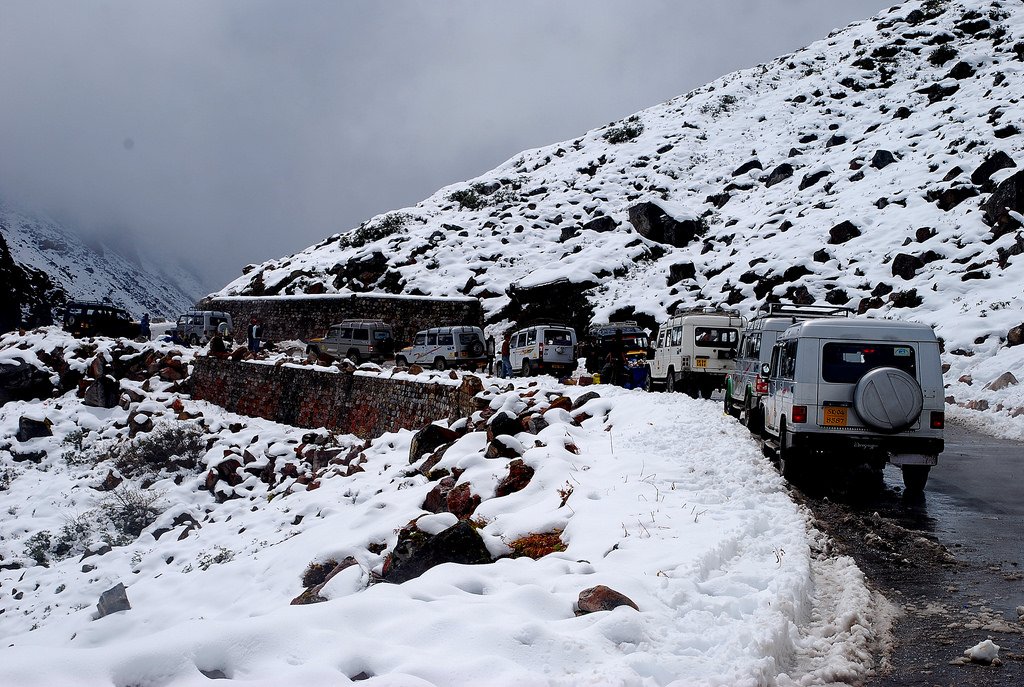
For the adventurous soul, Sikkim offers a playground of thrilling experiences amidst its untamed wilderness. Trekking trails crisscross the state, leading intrepid travelers through dense forests, alpine meadows, and remote villages. The Goechala Trek, the Dzongri Trek, and the Singalila Ridge Trek are just a few of the iconic routes that promise breathtaking views of the Himalayas. Rafting on the Teesta River, mountain biking in the hills, and paragliding over the valleys provide adrenaline-pumping adventures for outdoor enthusiasts.
A Warm Welcome and Genuine Hospitality
Above all, Sikkim is distinguished by the warmth and hospitality of its people, whose genuine smiles and open hearts welcome visitors with open arms. Whether savoring traditional delicacies in a homestay, joining a local festival celebration, or sharing stories with villagers around a bonfire, the hospitality of Sikkim leaves a lasting impression, forging bonds of friendship and camaraderie that transcend cultural boundaries.
In Conclusion
Sikkim is a land of timeless beauty, where nature’s magnificence converges with rich cultural heritage and warm hospitality to create an unforgettable travel experience. From the towering peaks of Kanchenjunga to the tranquil lakes and valleys, every corner of Sikkim exudes a sense of serenity and wonder. So, come, embark on a journey of exploration and discovery, and immerse yourself in the enchanting beauty of Sikkim—a Himalayan paradise waiting to be explored.


